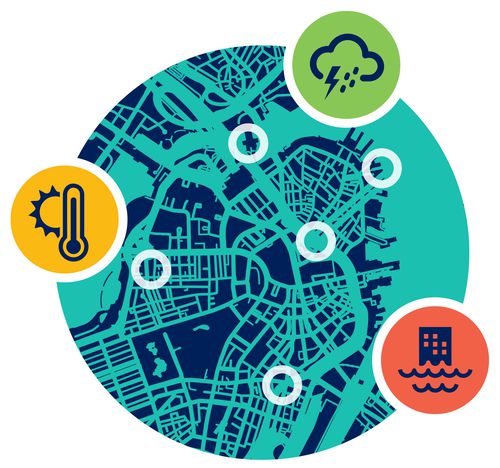Climate Resilience is Key to Avoiding Collapse
“Climate resilience is the ability to anticipate, prepare for, and respond to hazardous events, trends, or disturbances related to climate. Improving climate resilience involves assessing how climate change creates new, or alters current, climate-related risks. We can take steps to better cope with these risks.”1
Humanity has a lot of problems. Climate change, political polarization, increasing economic inequality, and extreme biodiversity loss are just a few. We must address them. It makes sense to act now to minimize future economic, physical and social risks.
Climate resilience is associated with acute events (like floods, hurricanes or wildfires) that become more frequent and intense as the climate changes. Effective resilience planning accounts for acute events and chronic events (like rising sea levels, refugee migrations and loss of arable land). Some businesses, governments, institutions and individuals are planning for the environment and economy they will soon face. All businesses, governments, institutions and individuals should be planning to become more resilient… and hastening to implement those plans.
The ancient Roman and Mayan civilizations (and many others) collapsed. Contributing factors were economic, environmental, social and cultural. Disruptions in one domain often cascade into another. In some cases a natural disaster (e.g. tsunami, earthquake or massive fire) precipitates a collapse. Other factors such as overpopulation and resource depletion (byproducts of the society’s success) often are the cause of collapse. In many cases, oppressed lower classes rise up and seize power from a smaller wealthy elite when they identify widespread corruption and lose faith in establishment institutions.
As we work to mitigate the worst potential impacts of climate change, we must also adapt and increase our resiliency. Businesses can factor climate risks into existing risk management programs. Governments must upgrade infrastructure and help communities cope with extreme weather, sea level rise and other climate impacts.
NOTE: I’ll dig deeper into what can and is being done to build resilience at all levels in subsequent posts.
Unlike the ancient Romans and others, our civilization is global in scope. Transportation is global. Our financial and trade systems are global. Communications are global and instantaneous. We are interconnected and interdependent like never before.
Disaster research informs us that, in the early phases of crisis, people typically respond with extraordinary degrees of cooperation and self-sacrifice (witness the outpouring of assistance to fight the rampant Australian wildfires). But if the hardships continue over a long period of time, or spread, responses devolve into placing blame and competing for scarce resources.
The one factor most likely to affect how well our communities endure a global crisis is the quality of our cooperation and collaboration. A great deal depends on whether we exhibit pro-social attitudes and responses, or we panic and blame. We must recognize that we’re all in this together. The potential collapse of civilization is not any one faction’s fault. By pulling together we can salvage and protect what is most intrinsically valuable about our planet and its inhabitants… and, over the long term, even improve our ecosystem and society.
Tough times lie ahead. That doesn’t mean there’s nothing we can do. We still have an opportunity for action. Global resiliency requires global cooperation.
Hope is not just an expectation of better times ahead. It is an active determination to achieve the best possible outcome regardless of the challenges we face. We shouldn’t give up hope until we’ve done all we can to increase resiliency in our ecosystems, our institutions and ourselves.
1 https://www.c2es.org/content/climate-resilience-overview/


